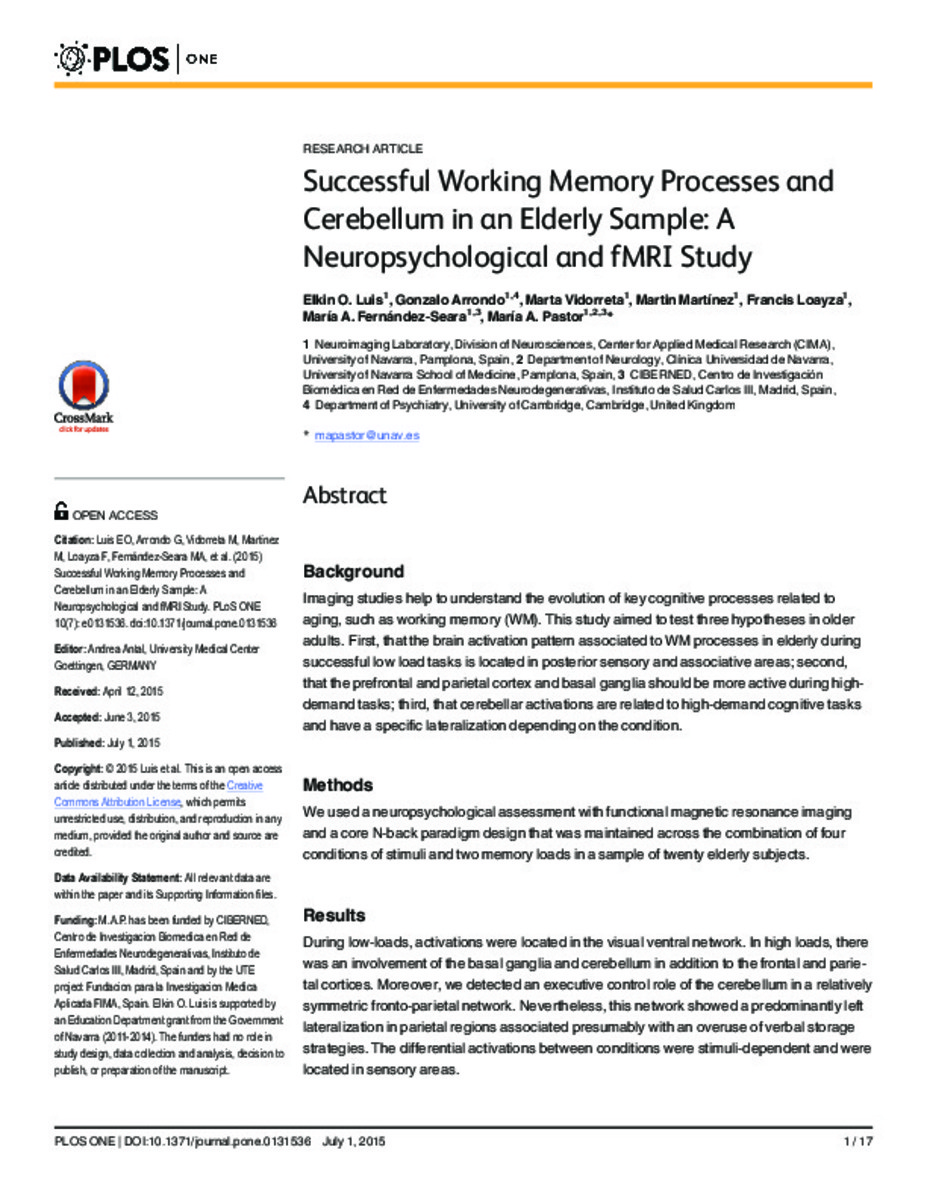Successful working memory processes and cerebellum in an elderly sample: A neuropsychological and fMRI study
Keywords:
Brain activation
Older adults
Cerebellar activations
Memory processes
Materias Investigacion::Ciencias de la Salud::Neurología
Publisher:
Public Library of Science
Note:
This is an open access article distributed under the terms of the Creative Commons Attribution License, which permits
unrestricted use, distribution, and reproduction in any medium, provided the original author and source are credited.
Citation:
Luis, E.O.; Arrondo, G.; Vidorreta, M.; et al. "Successful working memory processes and cerebellum in an elderly sample: A neuropsychological and fMRI study". Plos one. 10 (7), 2015, e0131536
Statistics and impact
0 citas en

Items in Dadun are protected by copyright, with all rights reserved, unless otherwise indicated.








